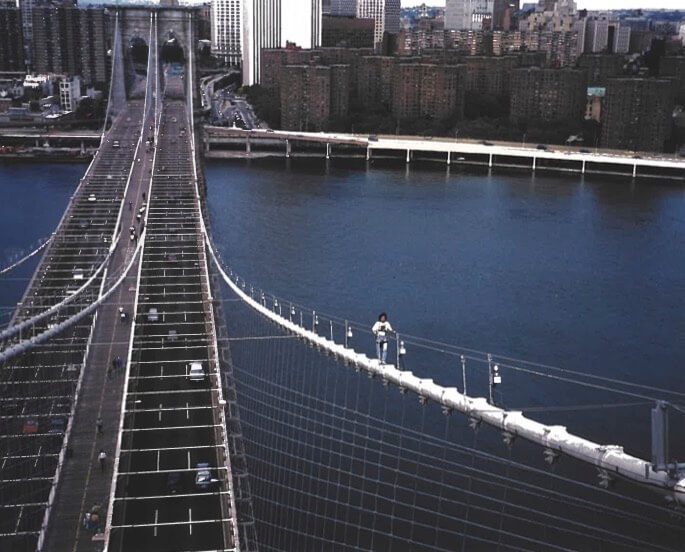Court House’s Bill Campbell Once Had a Peak Experience on the Brooklyn Bridge
Standing on a cable, nearing the top of one of the towers of the Brooklyn Bridge, Bill Campbell was in blissful ignorance of the commotion he had caused a couple hundred feet below.
Even the helicopter circling above wasn’t enough to alert Campbell to the fact that he was the reason four of the bridge’s six lanes were closed, a Coast Guard boat was deployed and EMTs were rushed to the scene.
He was focused on the breathtaking sights of Lower Manhattan – which he photographed with a small, inexpensive camera while he hung off the side of the bridge’s massive suspension cables – and the profound connection he felt with the world’s first steel-wire suspension bridge, which he had studied and long admired as one of the wonders of 19th century engineering.
The year was 1997, and Campbell was not an iron worker. He was a civilian who had surprised himself by somewhat easily obtaining a permit to make an authorized bridge climb.
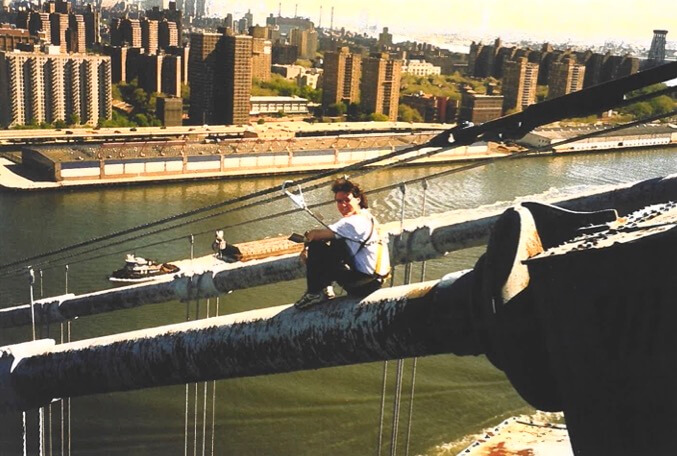
Police and other authorities who rushed to the scene for a call about a possible jumper were perhaps just as surprised that the person they were called about, Campbell, had the city’s permission to be on the cables between the bridge’s two iconic Gothic Revival stone towers that loom 275 feet above the East River.
In fact, he was having the time of his life. In an experience few other civilians have ever shared and that none will likely replicate in today’s world, Campbell, of Court House, said he felt “the realization of a dream.”
It’s a dream he was able to relive one other time, on the Manhattan Bridge a year later, in 1998, a few years before the world and security changed forever, Sept. 11, 2001.
A Bridge Man in a Bridge County
Campbell, who has lived in Cape May County for 21 years, said he has been drawn to bridges since he was very young. In a recent interview with the Herald, he said he moved to the county because of a connection he felt to the boardwalk, the amusements, the history and (of course) the many bridges.
He has the plate at home from the old Grassy Sound train bridge, which still stands in fragmented portions in the Intracoastal Waterway off West Wildwood, along with the rusted-out abandoned crane that had once been commissioned to remove it.
Some of Campbell’s earliest and fondest memories are of smelling the salt air while crossing the old wooden bridge into North Wildwood as a kid, entering town by car for a family vacation.
“You could literally see the beams in front of you, from cars that just crossed over them, bouncing back into place,” Campbell, 52, recalled. “We held our breath, but we knew we were there, and it was so exciting.”
Others share Campbell’s nostalgia for the quirky and dated – but memorable – bridges that carried shoregoers on the final leg of their road trip to paradise. A video posted to YouTube from inside a car crossing that North Wildwood drawbridge, in the summer of 1987, has over 60,000 views and dozens of comments from people reminiscing on their own experiences on the rickety, boardwalk-like span.
One commenter thanked the poster for uploading the video: “We’ve been traveling to Wildwood since the mid-’70s. My kids are fully grown now, but I’ve been telling them their entire lives about this bridge. Now they can see it for themselves!”
Campbell misses those old bridges, although he understands why they were eventually replaced. “My grandfather used to say, ‘If you had a guy in a canoe with a top hat on, you’d have to open the bridge,’” he recalled.
Still, he laments the fact their character will never be replicated. Most bridges in Cape May County now, he said, are boring compared to what preceded them.
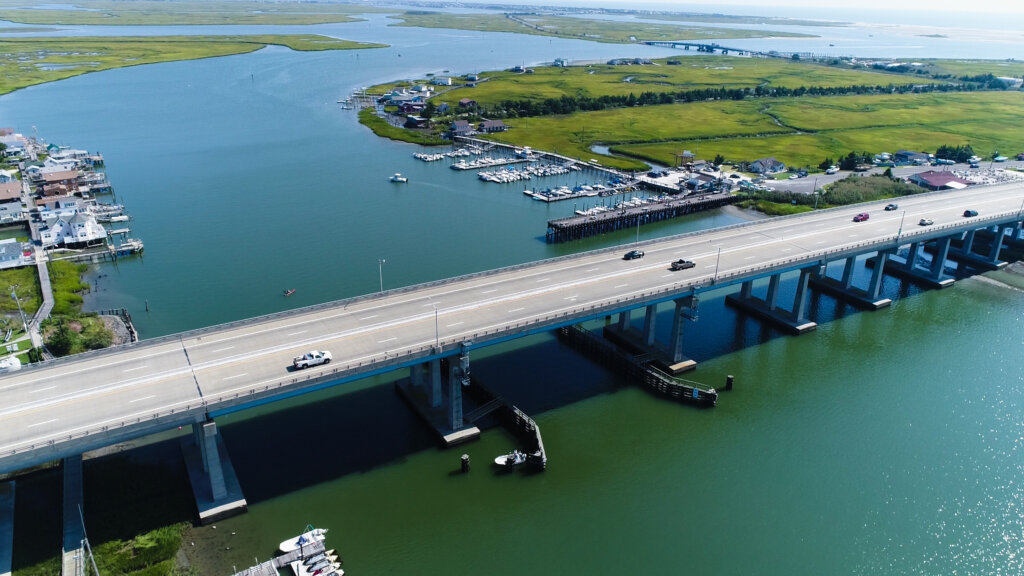
“Now, they’re just overpasses that go over water,” he said. “There’s nothing exciting about them. These other bridges had character. They made noises. They rang bells. They had arms that would come down to stop the boat. They would move and go up and down.”
Bridging a Connection
It wasn’t a bridge experience locally that first captivated Campbell, however. His parents have told him that as a child, when he was so young he could barely talk, he would look up in awe when crossing the Delaware River, between New Jersey and Philadelphia, on the Ben Franklin Bridge or Walt Whitman Bridge. He was unsuccessful in trying to obtain commission to climb those two bridges, which are operated by the Delaware River Port Authority.
His love and perhaps obsession with bridges was cemented on a trip to New York City in December 1987, when as a 16-year-old he and his then-girlfriend, now his wife, took a bus trip to see the Rockettes perform at Radio City Music Hall.
Initially disappointed that the bus was taking the Lincoln Tunnel into New York City and not crossing one of the city’s iconic bridges, his fortunes changed when one of their stops after the show was the South Street Seaport, on the Manhattan side of what he called “the grandaddy of all bridges,” the Brooklyn Bridge.

When it opened in 1883, the Brooklyn Bridge was the longest suspension bridge in the world. Its 1,595.5-foot span has a clearance of about 130 feet above the river. It was also the first fixed connection between the boroughs of Brooklyn and Manhattan.
When Campbell saw it, the moment was a profound experience in his life.
“It changed my life,” he recalled. “It literally changed my life. I grabbed [my girlfriend] by the hand and I said, ‘We’re walking over this bridge.’ It was raining. I said, ‘We’re doing this. Even if the bus leaves, this is being done. This is mandatory. We’re walking across this bridge.’”
The couple did the walk, and even made the bus, but the experience created a connection for Campbell to the Brooklyn Bridge that would culminate when he climbed to the top 10 years later.
He had heard that the bridges in New York could be climbed by photographers, as long as they obtained a permit from the city. And so, he got a crazy idea.
“I’m not a photographer, but I know what I like in a picture. And so, I used that as an entry point,” Campbell said.
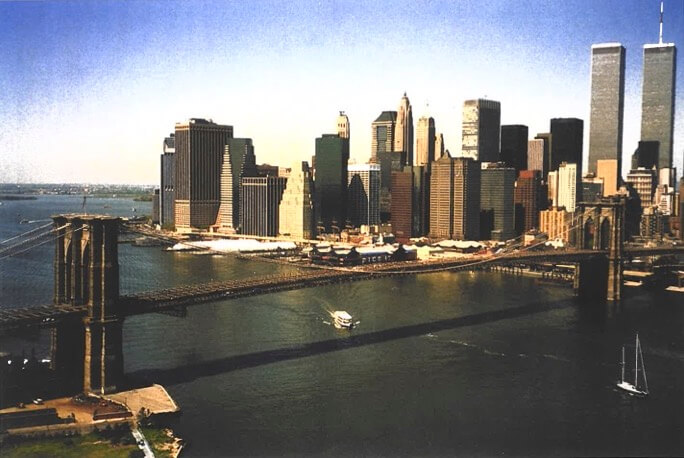
He recalled being shocked by how easy the process was to obtain the permit. After taking out a $1 million insurance policy, payable to New York City, he filled out the paperwork for the free permit.
The only other step was for him to get an escort from an iron worker to make the climb. Campbell said that wasn’t hard because the iron workers were “enthused by my enthusiasm,” and a date was quickly set: Oct. 7, 1997.
“It does defy a lot of logic. Even in retrospect, it seemed like this was too easy,” he said.
Few others have shared Campbell’s experience. He said he knew of only two other civilians who had scaled the Brooklyn Bridge: He connected and forged a friendship with one, the other he never met. He said the iron workers who escorted him certainly didn’t make it seem as if it was a common occurrence.
Suspense Atop the Suspension
Campbell climbed both the Brooklyn Bridge and Manhattan Bridge under the supervision of iron workers, who he said were impressed by how at ease he felt on the deadly heights. He was strapped into a harness, which was connected in two places to a handrail that was really a small cable. When he would get to an obstruction in the cable, like some sort of steel support, he would unclip one hook at a time and connect to the other side.
During his first climb in ’97, the realization of his dream briefly turned into a nightmare for those trying to cross the span below, when the authorities got the bridge-jumper emergency call. Traffic was severely restricted and backed up way into Brooklyn. Despite being with his iron worker escort and having full authorization to be where he was, the police were not in a good mood when they finally got Campbell’s attention and made contact.
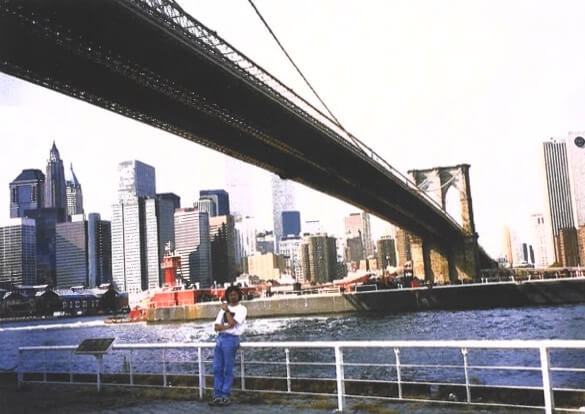
“They were not happy,” he said. “I don’t know if they realized at that point that what they got called in about was completely false, or if they just had egg on their face, or a combination thereof.”
But after showing authorities his permit, insurance policy and iron worker escort, Campbell said he had to walk to the end of the bridge and get into the back of a police truck, which took him to the local precinct to complete a report.
Creating even more drama was the fact that Campbell’s girlfriend, who stood on the pedestrian walkway of the bridge to videotape his climb, was run over by a biker just as all the commotion her boyfriend had inadvertently caused was going on.
Like something out of “America’s Funniest Home Videos,” her camera kept filming, after being knocked out of her hand. An iron worker, who stayed with her on the bridge span while Campbell climbed, can be heard telling the biker from out of the frame, in terms you might expect from a blue-collar New Yorker, that he would throw the guy’s bike over the side and into the river, Campbell said.
He said his girlfriend declined medical care from paramedics who were already on the scene because of the call about the potential jumper. She has a bump on her head from the accident to this day, he said.
“She really didn’t tell me how bad it was for a long time,” he said. “She didn’t want to ruin my day.”
After finishing up business at the precinct, cops told Campbell he could go back up to the top of the bridge, he said, but by that point his new iron worker buddies had work to do.

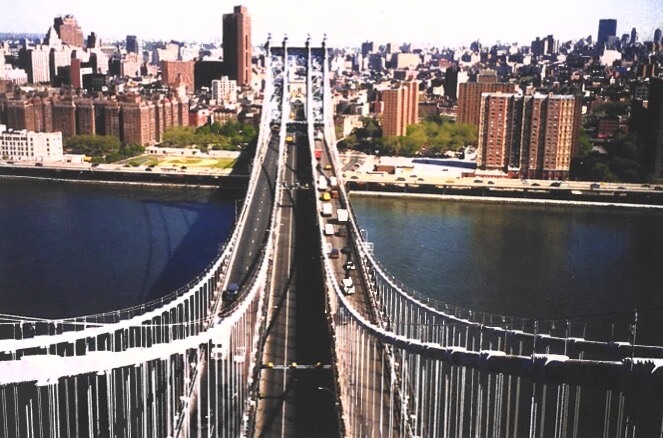
Always a Bridge Guy
While heightened security concerns may have forced Campbell into an early retirement from climbing some of the world’s most impressive bridges, he is still drawn to them and thinks perhaps someday he can make them a part of his regular life.
He said that in the past he found different side gigs working on local bridges. He was a bridge operator on the Cape May Shoreline Train Swing Bridge over the Cape May Canal and worked for a summer on the Two-Mile Landing Bridge, running from Diamond Beach into Cape May.
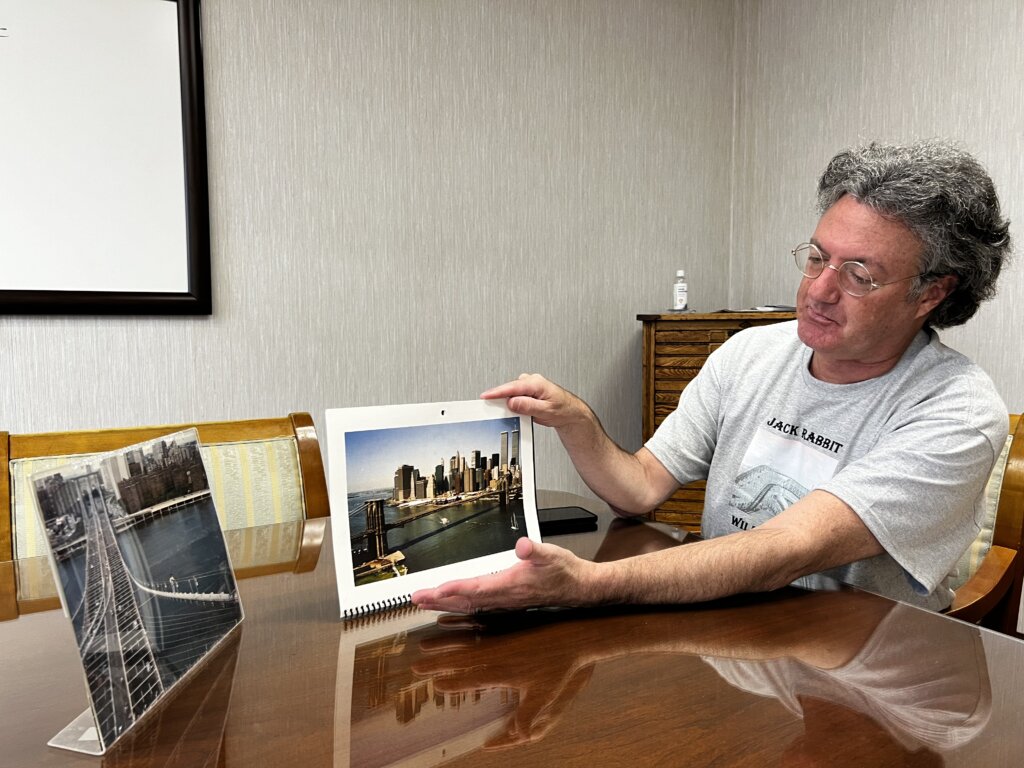
While he said he is by no means circling a retirement date from his job with the state, considering he now has a 5-year-old daughter at home, Campbell said he hopes to work someday on the George Redding Bridge, the drawbridge that connects Wildwood to the mainland.
He is a student of bridges and can recite an enormous amount about their history. But he only imagined he could feel such an intimate connection, and still wasn’t sure the morning of the scheduled 1997 climb that the plan would actually go through.
“There was that sense of paranoia. You think, there’s no way they’re going to let me do this. And then it happened,” Campbell said. “It wasn’t until I got halfway up the Brooklyn Bridge that I realized, this is actually happening. I’m on the bridge. I’m on the cable. I’m feeling the cable sway a little bit. I’ve become one with the structure. I’m at its mercy, so to speak. It’s pretty incredible.”
Contact the author, Shay Roddy, at sroddy@cmcherald.com or 609-886-8600, ext. 142.

